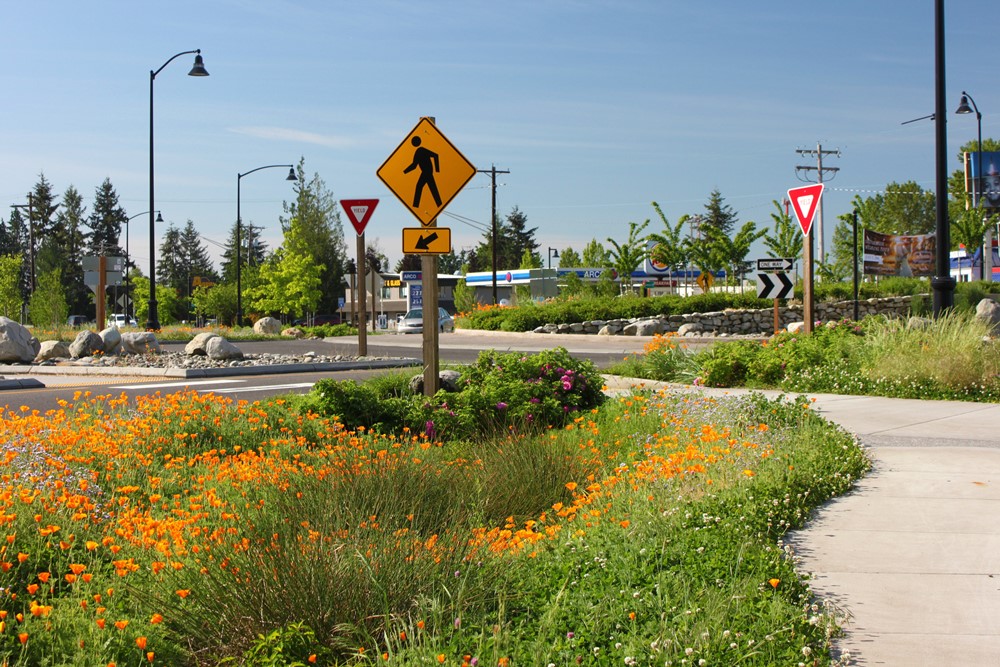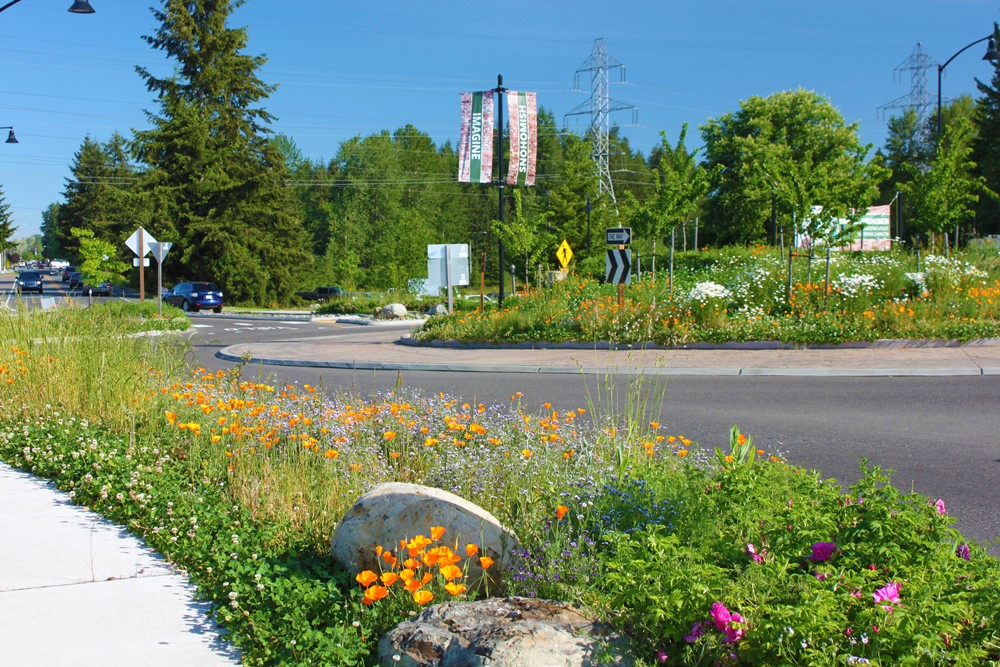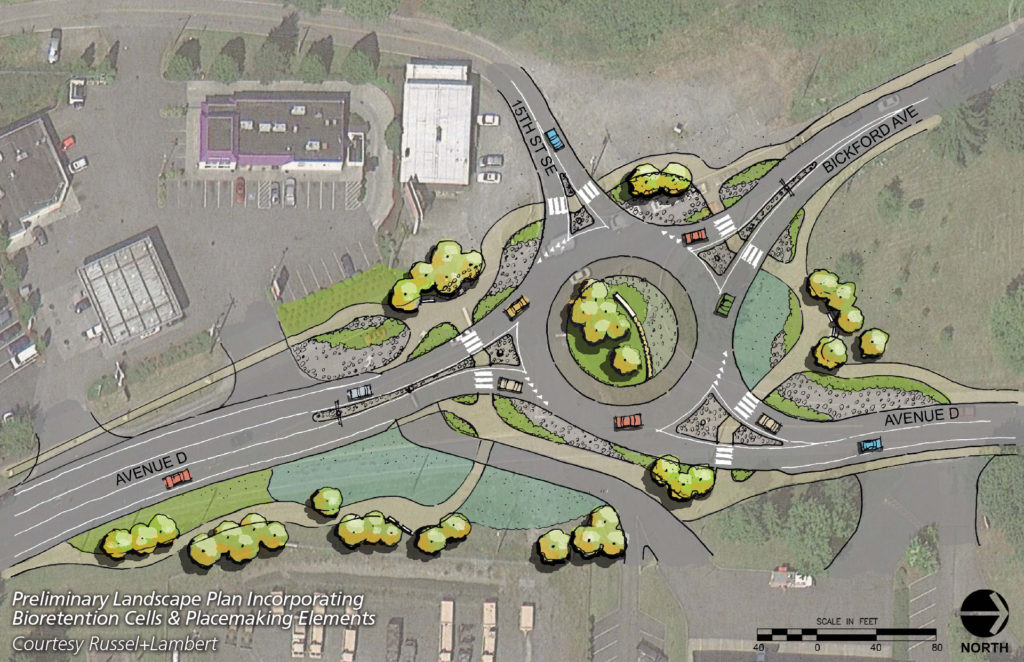At Reid Middleton, we view Roundabout Design as a powerful tool to promote green infrastructure, enhance the environment, and build a community’s sense of place. For over 15 years, our design team has taken great pride in designing world class roundabouts to meet our clients’ needs. We understand the context-sensitive nature of roundabout design and believe that through our market-leading design practices we can more efficiently reduce paved areas, maximize green space, and promote cleaner stormwater runoff. (Seriously, we have been known to talk about the many virtues of roundabouts at dinner parties.) Our experience provides us with a unique ability to support low impact development (LID) while enhancing a community’s sense of place.
From the Concrete Jungle to Increasing Green Space
Until recently, the Phase II Municipal Stormwater Permit did not require LID evaluations on all roadway projects. Historic development practices encouraged the expansion of paved surfacing to promote usability of the public right-of-way, focusing on vehicle needs and leaving very little green space. Now, after many years of these practices, much of the stormwater from public right-of-way concentrates and flows, untreated, into the public stormwater system. Runoff from these surfaces can be highly contaminated with everything from vehicle fluids and brake dust to your three-year old’s ice cream cone. Ultimately, many of these contaminates flow directly to our local lakes, rivers, and Puget Sound.
As part of an effort to remedy this problem, permit requirements have been modified to require that jurisdictions adopt LID practices into their stormwater code. Our roundabouts are especially well suited for implementing LID techniques through the use of efficient geometry; often reducing impervious area and increasing the green space available for LID and placemaking elements. We leverage the spaces not required for vehicle use (the center island, splitter islands, and landscape buffer areas), to incorporate elements such as porous sidewalks and bioretention facilities, deliberately engineering these spaces into the site right from day one. These facilities encourage natural stormwater treatment and attenuation; they not only help meet stormwater requirements but can also be designed to enhance a community’s sense of place.
Incorporating Placemaking into LID Treatments
The character of the community and input from key stakeholders will help inform the type of placemaking elements selected. For example, on a recent roundabout project the City of Snohomish wanted to create a parklike feel at the northern gateway into town. In order to develop this parklike atmosphere and satisfy water quality treatment goals, sidewalks were pulled back from the roadway and bioretention cells were engineered into the resulting green space. An attractive wildflower seeding, fertilizing, and mulching mix was selected for the side slopes of the bioretention cells and was echoed throughout the landscape design. Our team strategically placed pockets of other placemaking elements around the site, including benches with decorative sidewalk paving and pedestrian lighting nearby. The result is that this gateway intersection has a strong, welcoming, parklike sense of place.

Photo credit: Russell + Lambert
With some early conversations and coordination between the client, key stakeholders, the stormwater management engineer, and the landscape architect, LID facilities can be designed to incorporate placemaking into a project from the very start. Stormwater management needs are met and the community’s character is enhanced. Win-win!

Photo credit: Russell + Lambert


Wow! what a great blog!